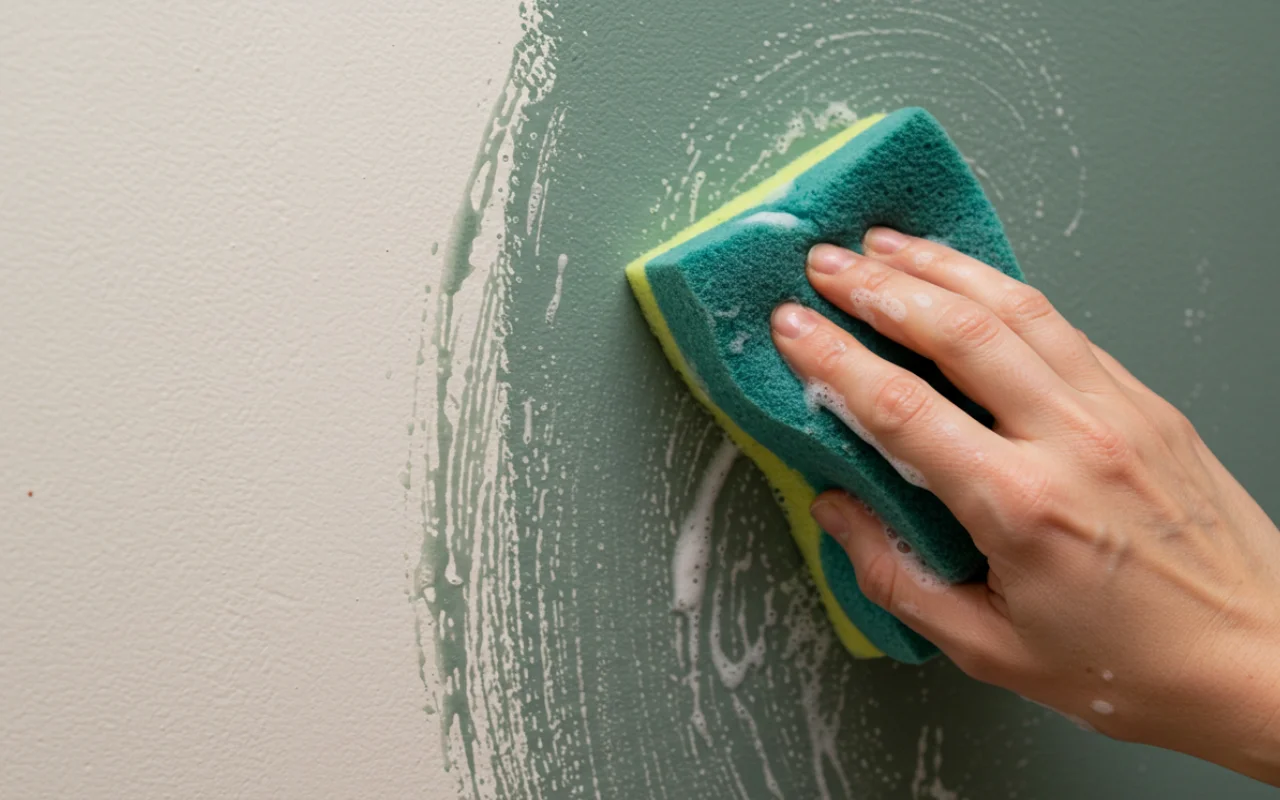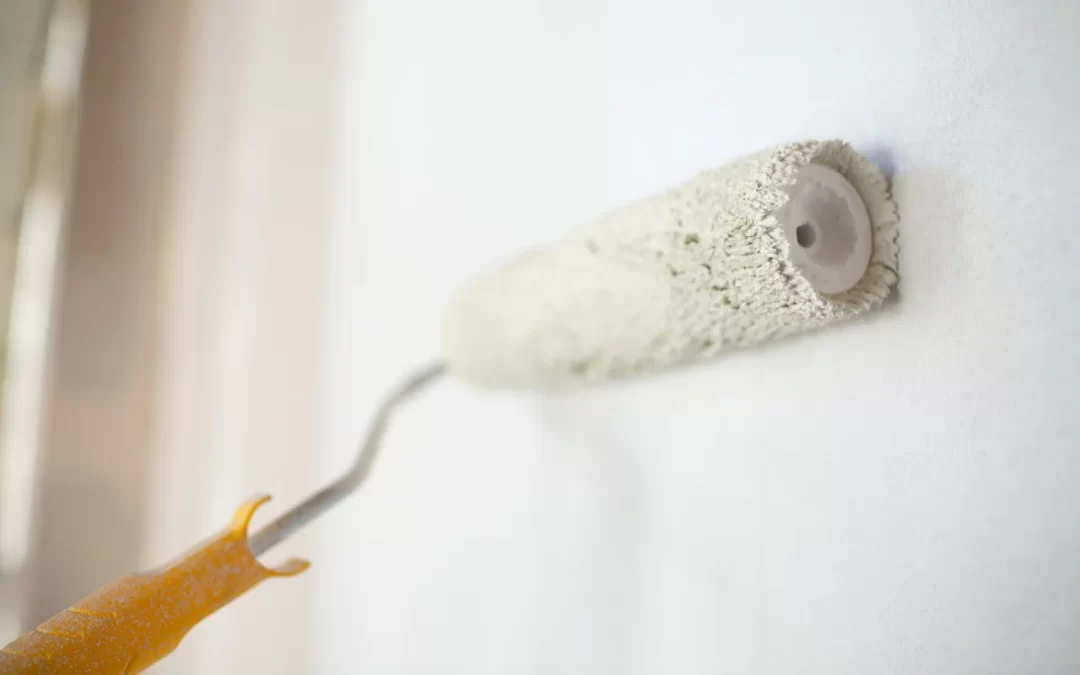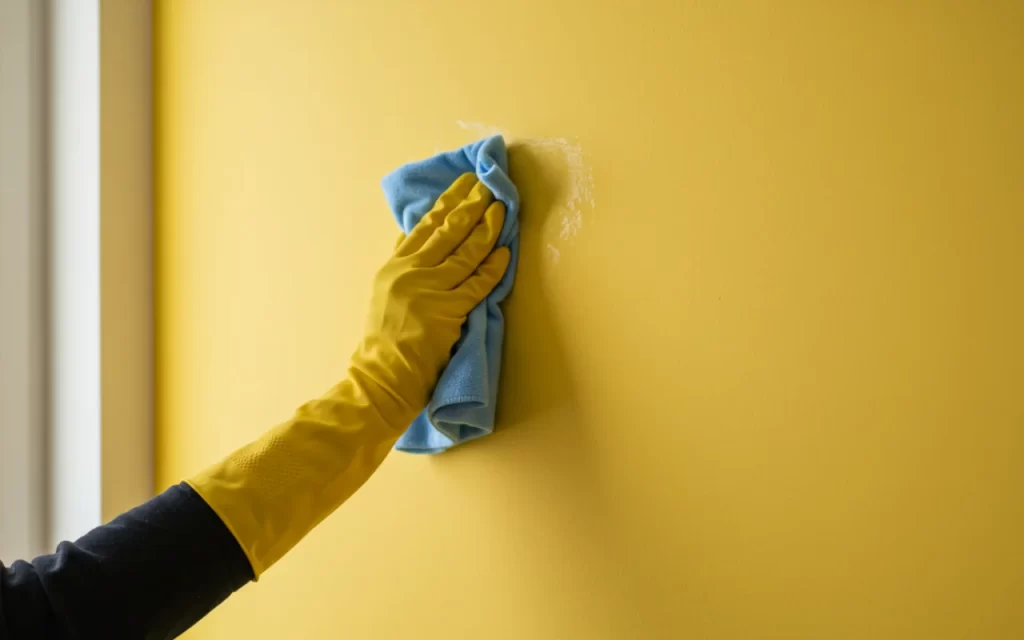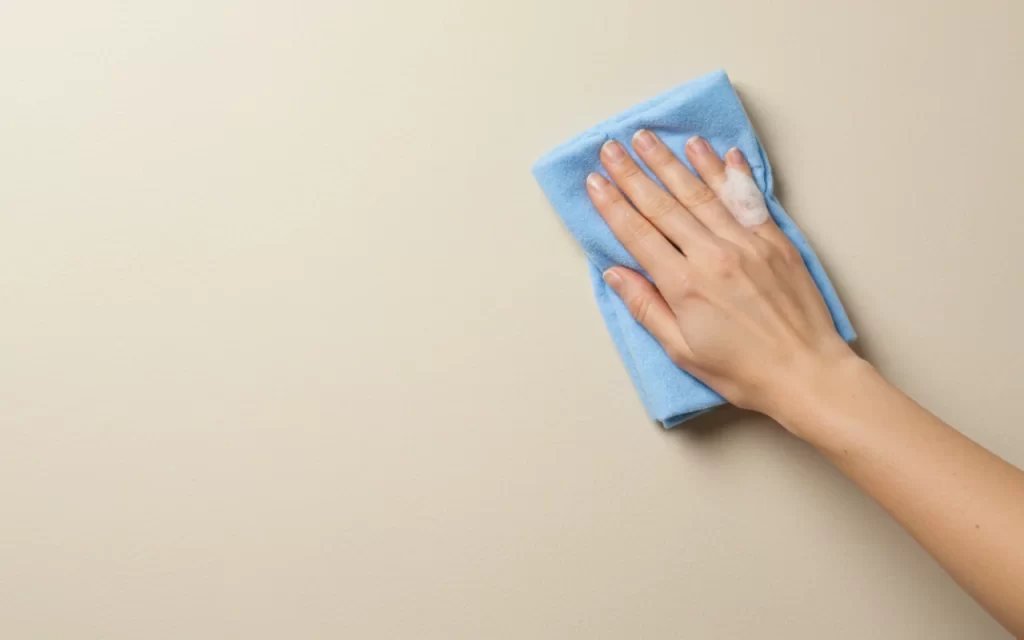Whether you’re trying to brighten up your living space, maintain a freshly painted commercial property, or ensure your walls look their best, properly cleaning painted walls is essential. Your walls can get dull over time due to dust, smoke, fingerprints, and scuffs, but you can restore their appearance without causing damage to the paint finish if you use the proper methods and equipment.
In this blog post, we’ll walk you through how to clean painted walls safely and effectively, no matter the paint type or room. We’ll also offer helpful tips for preventative care and point out when it might be time to call in professional help.
1. Know Your Paint Type Before You Start
The first and most crucial step in cleaning painted walls is determining what paint finish you’re dealing with. The method and cleaning products you use will depend mainly on this.
- Flat, matte, or eggshell finishes: These have low durability and can be easily damaged by too much moisture or scrubbing. Be gentle and use a soft sponge with a mild cleaning solution.
- Satin and semi-gloss finishes are usually applied in high-traffic locations such as kitchens and bathrooms due to their greater durability. A bit more complicated, they scrape.
- Glossy finishes: Since glossy paint is so durable and stain-proof, it is easier to clean. But be careful—if you clean them too aggressively, they can exhibit scratches.
2. Gather the Right Cleaning Supplies
Before diving into the job, gather the supplies you’ll need:
- Soft microfiber cloths or non-abrasive sponges
- A bucket with warm water
- Mild dish soap or vinegar
- A step ladder (for high areas)
- Magic erasers (for spot cleaning)
- Dry towels or cloths
Avoid harsh chemicals, bleach, or abrasive scrubbers, as they can strip paint or leave visible marks.
3. Dust the Walls First
First, clean your walls of any dust or cobwebs. Gently sweep the surface with a microfiber duster or a vacuum attachment for a brush. In order not to distribute dirt, begin on top and move down.
Dusting first prevents the dust from getting muddy when water is added subsequently. This process is crucial in pet-keeping homes and commercial business areas.
4. Prepare a Gentle Cleaning Solution
To a gallon of warm water, add a few drops of mild dish soap or half a cup of white vinegar. Test your solution on a small, hidden wall area to ensure it doesn’t affect the paint colour or finish.
If the test patch looks good after drying, you can proceed.
5. Wash the Walls Gently
Wring out your sponge till it’s damp after dipping it into the cleaning solution. To avoid streaking, start at the top of the wall and work your way down in parts. Use light, circular motions and don’t apply too much pressure, especially on flat or matte surfaces.
A magic eraser can be effective for tougher spots like scuff marks or crayon drawings. Be cautious and test on an inconspicuous area first, as magic erasers can sometimes dull the finish.
6. Rinse and Dry
After cleaning, rinse each component with a clean, damp towel to remove any soap residue. Then, use a dry towel or cloth to remove excess moisture. This prevents water marks and helps preserve the paint’s finish.
Drying is critical in humid areas like bathrooms or kitchens, where residual moisture can lead to mould or peeling paint.
7. Spot Clean Regularly
You don’t need to deep-clean your walls every week, but regular spot cleaning can keep them looking fresh between larger cleanings. Address stains, fingerprints, or smudges as soon as you notice them. The longer you wait, the harder they are to remove.
Wipe the afflicted region carefully with a clean cloth and a mild cleaning solution, then pat dry.
8. Take Preventative Measures
There are a few habits you can adopt to keep your painted walls looking new for longer:
- Avoid leaning furniture directly against walls to prevent scuffs.
- Encourage kids not to touch the walls with dirty hands.
- Use washable paints in high-traffic areas for easier maintenance.
- Consider placing door stoppers to reduce wall damage from swinging doors.
Taking small precautions like these can significantly extend the life of your wall paint.

When to Call in the Pros
If your walls have become too stained or damaged to clean effectively, or if cleaning removes or fades the paint, it might be time to repaint. In such cases, calling a professional painter can be a worthwhile investment.
Our company, Stretch Paints, offers professional services for body corporate, commercial and residential properties in Brisbane. We have the skills and experience to make your house appear good and function well, whether you need a touch-up on a wall or a full repaint.
Extra Materials
The following related topics can be beneficial to anyone searching for more extensive painting care and services:
- Learn about the full scope of our Commercial Painting services and how professional cleaning and repainting can refresh your business premises.
- If you’re focused on keeping your home looking its best, check out our Residential Painting page for information about colour choices, finishes, and regular maintenance tips.
- For property managers or apartment complexes, maintaining shared spaces is key. Our Body Corporate Painting services are designed to keep high-use communal areas looking clean, modern, and welcoming.
- Wondering what to do with leftover paint or old tins after touching up your walls? Our guide on How to Dispose of Paint Tins provides environmentally responsible tips.
Keeping Your Walls Fresh Year-Round
Cleaning painted walls doesn’t have to be intimidating. With the right approach, tools, and patience, you can refresh your home or office walls and keep them looking great for years. Remember, knowing your paint type and using gentle products are key. And when cleaning is no longer enough, repainting with professional help might be your best option.
We hope this guide gives you confidence in caring for your painted walls. And if you ever need repainting or touch-up work, we at Stretch Paints are always ready to help.




Recent Comments